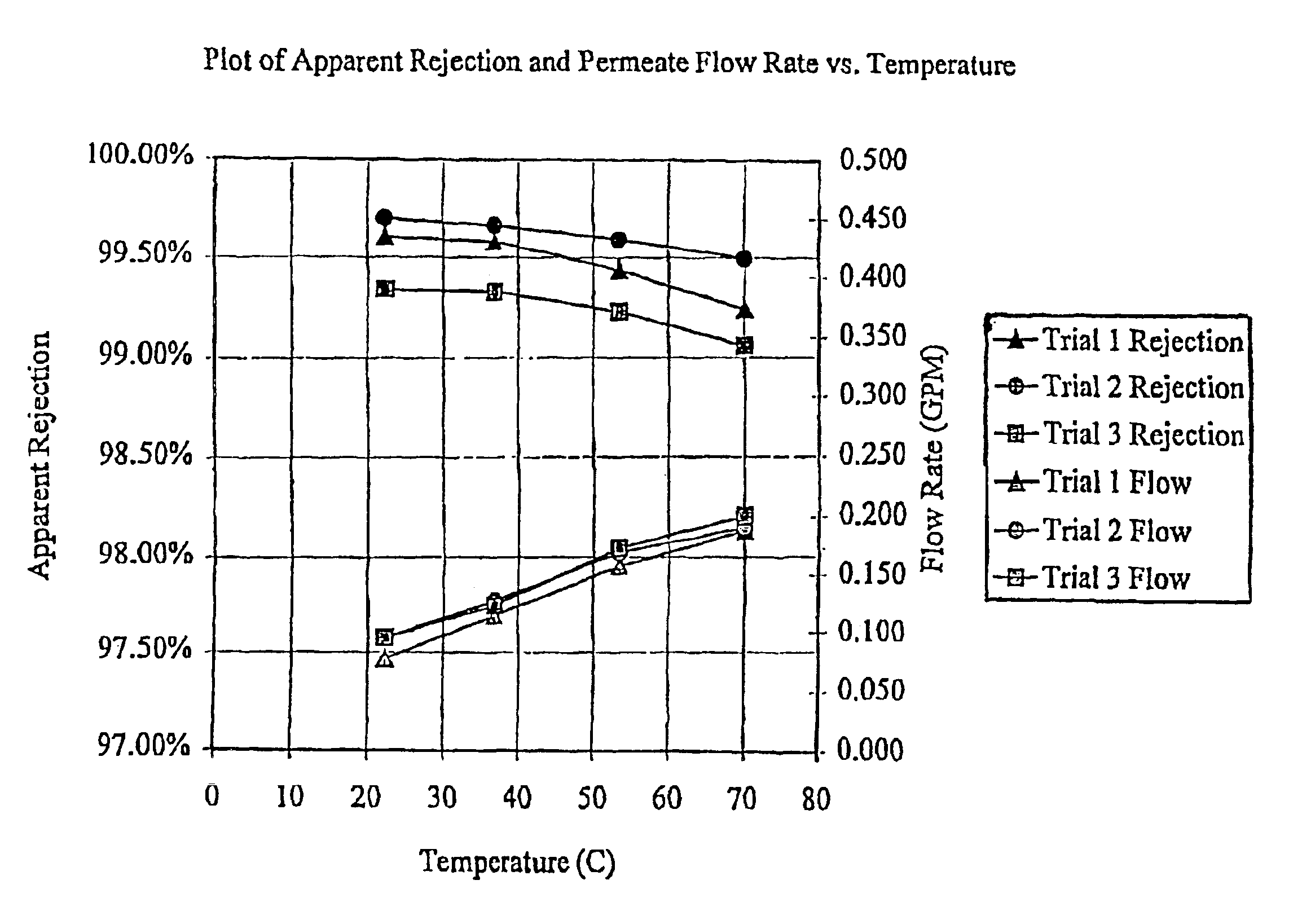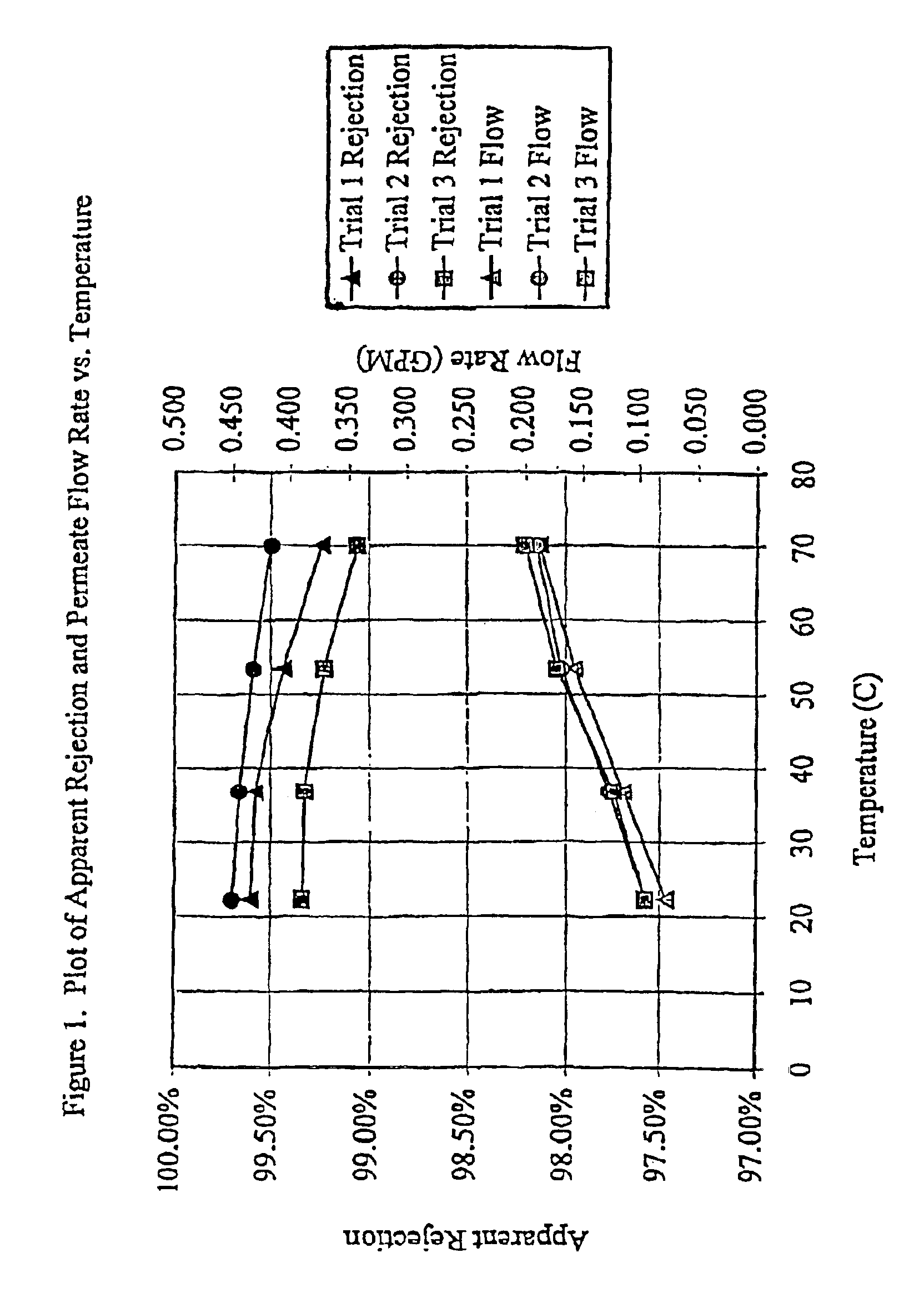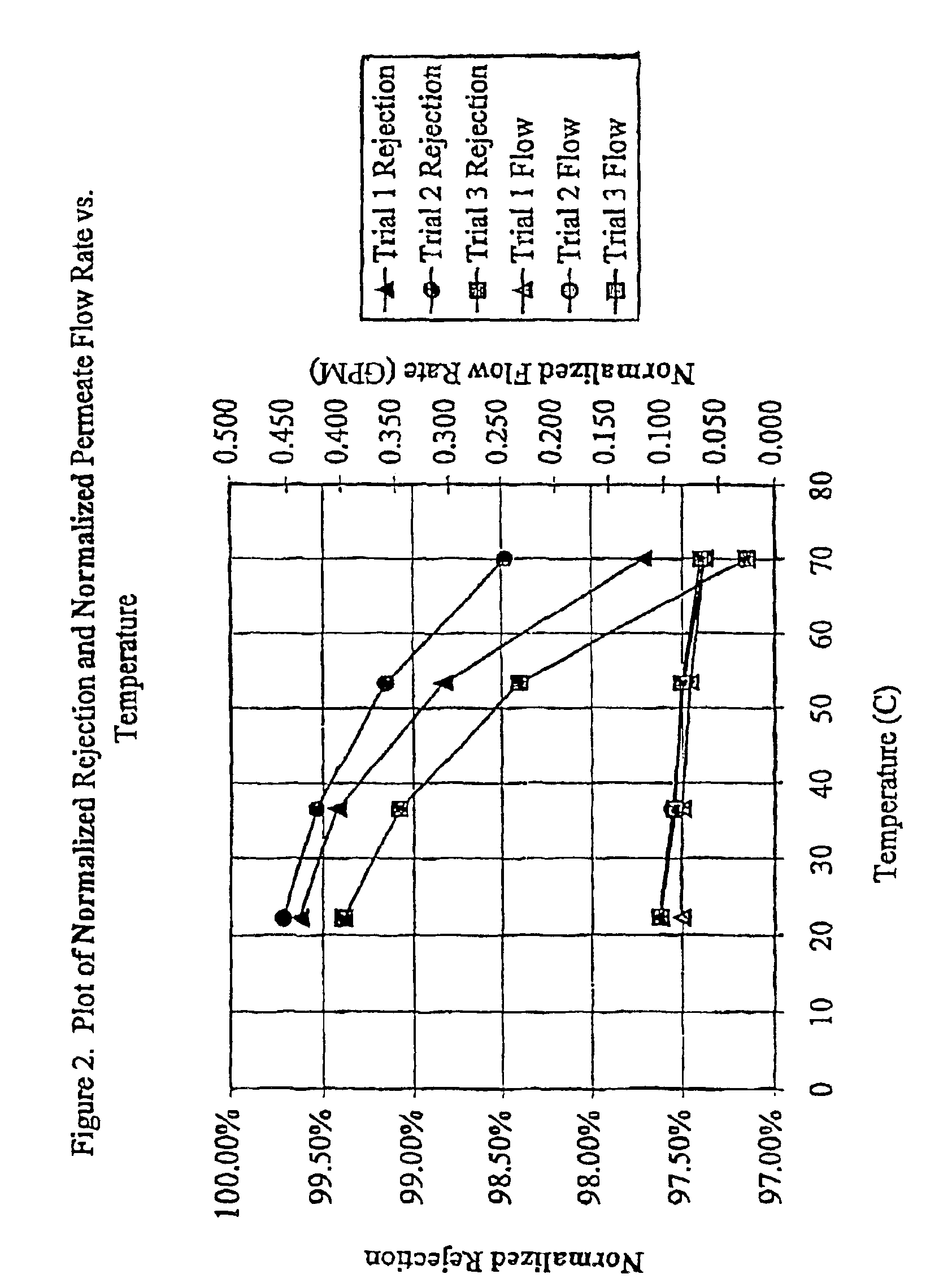Method for secondary oil recovery
a technology for oil recovery and secondary oil, applied in the direction of filtration separation, separation process, borehole/well accessories, etc., can solve the problems of inability to operate in warm or tropical regions, too experienced significant limitations, etc., and achieve effective and efficient operation, enhance the transmission of chloride ions into the permeate, and improve the effect of oil recovery
- Summary
- Abstract
- Description
- Claims
- Application Information
AI Technical Summary
Benefits of technology
Problems solved by technology
Method used
Image
Examples
Embodiment Construction
[0011]Applicant's improved method for secondary recovery of petroleum from a location below a body of saline water by flooding the permeable petroleum-bearing stratum utilizes a three-layer separation membrane in combination with a particular feed spacer arrangement which is capable of operation under conditions of relatively high ambient temperature and in the presence of some suspended solids in a spirally-wound membrane cartridge to produce a permeate that is substantially free of divalent ions but which contains desired high levels of monovalent ions, i.e. chlorides. This method facilitates the transformation in a single treatment step of source water, e.g. tropical seawater, into a liquid having such characteristics that it can be pumped directly into the permeable stratum to effect the desired flooding and secondary oil recovery. Moreover, operation can be carried out under a fairly broad range of pH conditions so as to facilitate appropriate periodic cleaning of such cartridg...
PUM
 Login to View More
Login to View More Abstract
Description
Claims
Application Information
 Login to View More
Login to View More - R&D
- Intellectual Property
- Life Sciences
- Materials
- Tech Scout
- Unparalleled Data Quality
- Higher Quality Content
- 60% Fewer Hallucinations
Browse by: Latest US Patents, China's latest patents, Technical Efficacy Thesaurus, Application Domain, Technology Topic, Popular Technical Reports.
© 2025 PatSnap. All rights reserved.Legal|Privacy policy|Modern Slavery Act Transparency Statement|Sitemap|About US| Contact US: help@patsnap.com



